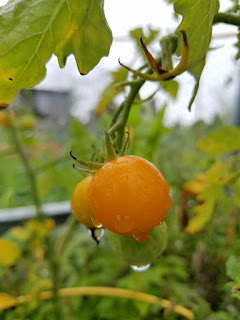I did what I said I wouldn't do - I got a buck. Oh no! He's just a little buckling right now, so he isn't smelly or weird like he will be when he's full grown. Right now he's cute and cries like the thirteen week old baby that he is. He's a Nubian like Peaches, and we've been calling him the Little Buck.
Planning for pigs is what made me finally decide I needed to just bite the bullet, and get a goat buck. Since our pig fence and shelter is complete, I spent a little time researching organic pig food, and realized that it just doesn't exist around here. I want to raise my own bacon, but unless I can figure out a way to feed a pig with mostly organic foods, my bacon wouldn't be any different that the bacon I can buy from the store or from Farmer Joe, who raised pigs with non-GMO pig food and lots of pasture.
There is a way to raise an organic pig, but it means I need to be able to feed the pig organic hay and pasture, vegetables from the garden, kitchen scraps, eggs from my chickens, and milk from my goat. Peaches needs to have a baby in order to make milk, and I think I'm right to assume her chances of getting pregnant are much higher if we have a boy goat. A real boy goat. No offense to the River brothers, but they just don't have what it takes (snip snip) to make a baby.
Don't worry Peaches, he will get taller! There were lots of male goats for sale on Craigslist, but most of the big impressive males that folks were selling for breeding purposes were very expensive, and quite intimidating. I'm sure Peaches would appreciate a big manly goat with a proven breeding record, but I was more comfortable starting with a little guy that I can get to know before he's big enough to smash me with his hard head. He's untested and who knows if he will make nice babies. At this point, I think I've proven to myself that trying to read Peaches body language and work it out to quickly drive her a buck is not very practical for my skill level and schedule. I'm just going to cross my fingers and hope they figure it out on their own.
So far, Peaches and the River brothers pick on him constantly. She bites his long floppy ears and the boys ram him with their heads. He cries and runs away, but at night he's snuggled up in a pile with everyone else, so I think it's normal goat behavior. The biggest problem with letting them all stay together is that I will not know the delivery date of the babies, should any be made. Also, when he starts to have that male goat aroma that everyone likes to talk about, he will contaminate the other goats with his stink. Will this be his forever home?





























































